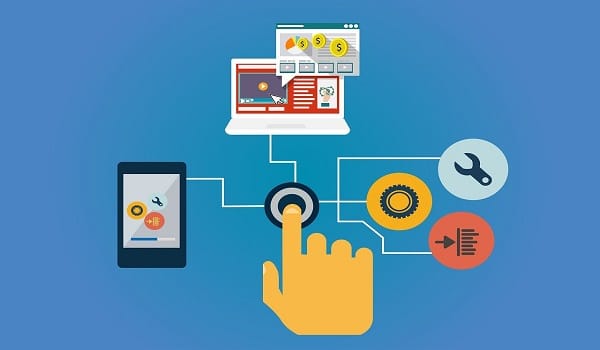Is digital transformation truly revolutionizing laboratories? This question now concerns many laboratory managers facing productivity and compliance challenges. Indeed, 78% of laboratories that have initiated their digitalization observe a significant improvement in their operational performance according to a recent sector study. Digital transformation in laboratories consists of integrating advanced digital technologies to automate, optimize, and secure all analytical and administrative processes. This technological evolution enables laboratories to improve their operational efficiency, reduce human error, and ensure better data traceability.
This article presents the key steps, concrete advantages, and technological solutions to successfully achieve your laboratory digital transformation.

Key takeaways regarding laboratory digital transformation:
- Intelligent automation: 60% reduction in repetitive manual tasks
- Enhanced compliance: Complete traceability of data and processes
- Productivity gains: 40% acceleration of analysis cycles
- Predictive analytics: Anticipation of maintenance and resource optimization
- Data security: Protection and integrity of critical information
Would you like to assess your laboratory’s digitalization potential?
Contact our experts for a personalized assessment.
1. What is digital transformation in a laboratory?
Laboratory digital transformation represents the strategic integration of digital tools within the analytical ecosystem. This approach aims to modernize traditional working methods by leveraging innovative technologies.
The primary objective consists of creating a connected, automated, and data-driven work environment.
1.1. What are the main technologies involved?
Laboratory digital transformation technologies are structured around several axes:
- LIMS (Laboratory Information Management System) for centralized sample management
- IoT and connected sensors for real-time equipment monitoring
- Artificial intelligence for predictive analysis and process optimization
- Cloud computing for secure storage and remote data access
- Digital instrumentation with connected interfaces and automated control
- Mobility solutions for information access from any workstation
1.2. How does digitalization impact laboratory processes?
The impact of digitalization manifests at several levels:
- Information flow: Smooth data circulation between different departments
- Traceability: Automatic recording of each analysis step
- Quality control: Continuous monitoring of critical parameters
- Collaboration: Instant result sharing between remote teams
- Predictive maintenance: Breakdown anticipation through collected data
2. What are the advantages of digital transformation for laboratories?
Laboratory digitalization brings measurable benefits across the entire value chain. These advantages affect both operational efficiency and customer satisfaction.
Moreover, regulatory compliance is strengthened through automated controls.
2.1. How to improve operational efficiency through digital technology?
Operational efficiency improves significantly through:
- Automation of repetitive tasks: Liberation of technician time for value-added activities
- Schedule optimization: Intelligent resource allocation according to workload
- Waiting time reduction: Process streamlining by eliminating bottlenecks
- Procedure standardization: Practice homogenization across all sites
2.2. What productivity gains can be expected?
Observed productivity gains include:
- 30% reduction in analysis delays through automation
- 50% decrease in data entry errors through digitalization
- 25% increase in processing capacity via flow optimization
- 40% acceleration of validation processes through automated workflows
2.3. How does digitalization reinforce regulatory compliance?
Regulatory compliance benefits from:
- Complete audit trail: Automatic recording of all actions
- Electronic signatures: Secure validation of critical documents
- Electronic archiving: Permanent storage and facilitated data search
- Automated reporting: Automatic generation of regulatory reports
- Integrated controls: Real-time verification of procedure compliance
3. What are the key steps to succeed in digital transformation?
Laboratory digital transformation success requires a methodical and progressive approach. Each step must be carefully planned to minimize risks and maximize team adoption. Change management constitutes a critical success factor.

3.1. How to assess your laboratory’s digital maturity?
Digital maturity assessment involves:
- Existing process audit: Current flow mapping and improvement point identification
- Technology inventory: Status of existing equipment and software
- Skills analysis: Team digital level assessment
- Sector benchmarking: Comparison with market best practices
- Priority identification: Priority project definition according to business impact
3.2. What technological solutions should be prioritized?
Technological solution selection must consider:
- Interoperability: Integration capability with existing systems
- Scalability: Adaptation possibility to future needs
- Ease of use: Intuitive interface to promote adoption
- Technical support: Assured support and maintenance
- Return on investment: Demonstrated profitability in short and medium term
3.3. How to involve teams in the transformation process?
Team involvement requires:
- Transparent communication: Clear exposition of challenges and benefits
- Adapted training: Personalized skills development program
- Individual support: Close support during transition phase
- Feedback collection: Active listening to user feedback
- Effort recognition: Contribution valorization to change
4. How does Picomto support laboratory digital transformation?
Picomto positions itself as the laboratory digital transformation expert by proposing a global and personalized approach.
Our platform integrates all functionalities necessary for analytical process digitalization. Support extends from the consulting phase to operational deployment.
4.1. What are Picomto’s main advantages for a laboratory?
Picomto’s specific advantages include:
- Intuitive interface: Rapid adoption by all user profiles
- Digital work instructions: Interactive procedures with step-by-step guidance
- Complete traceability: Detailed history of all operations
- Non-conformity management: Automated workflow for deviation handling
- Advanced reporting: Real-time customizable dashboards
4.2. How does Picomto integrate with other laboratory tools?
Picomto integration is performed via:
- Standardized APIs: Smooth connection with existing LIMS systems
- Pre-configured connectors: Rapid integration with market ERPs
- Facilitated import/export: Data exchange with all standard formats
- Modular architecture: Progressive deployment according to needs
- Dedicated technical support: Personalized integration support
4.3. What concrete results can be expected with Picomto?
Results observed among our laboratory clients:
- 45% reduction in training time through digital instructions
- 60% decrease in procedural errors through interactive guidance
- 35% gain in new employee qualification delays
- 50% improvement in critical operation traceability
Conclusion
Laboratory digital transformation represents a major strategic challenge for maintaining competitiveness.
Digital technologies offer considerable opportunities for operational efficiency improvement. However, this transformation’s success relies on a methodical approach and expert support.
Picomto accompanies you in this endeavor with proven solutions and personalized support. The future of laboratories is being shaped today through intelligent digitalization of their processes.
FAQ
What are the 5 phases of digital transformation?
Diagnosis, strategy, management, deployment, continuous optimization.
What are the 3 pillars of digital transformation?
Technology, business processes, human support.
What is industrial digital transformation?
Digital integration in all industrial processes.
What are digital transformation tools?
LIMS, IoT, AI, cloud, mobility, analytics.
What is the purpose of digital transformation?
Improve efficiency, quality, and competitiveness.






Leave A Comment